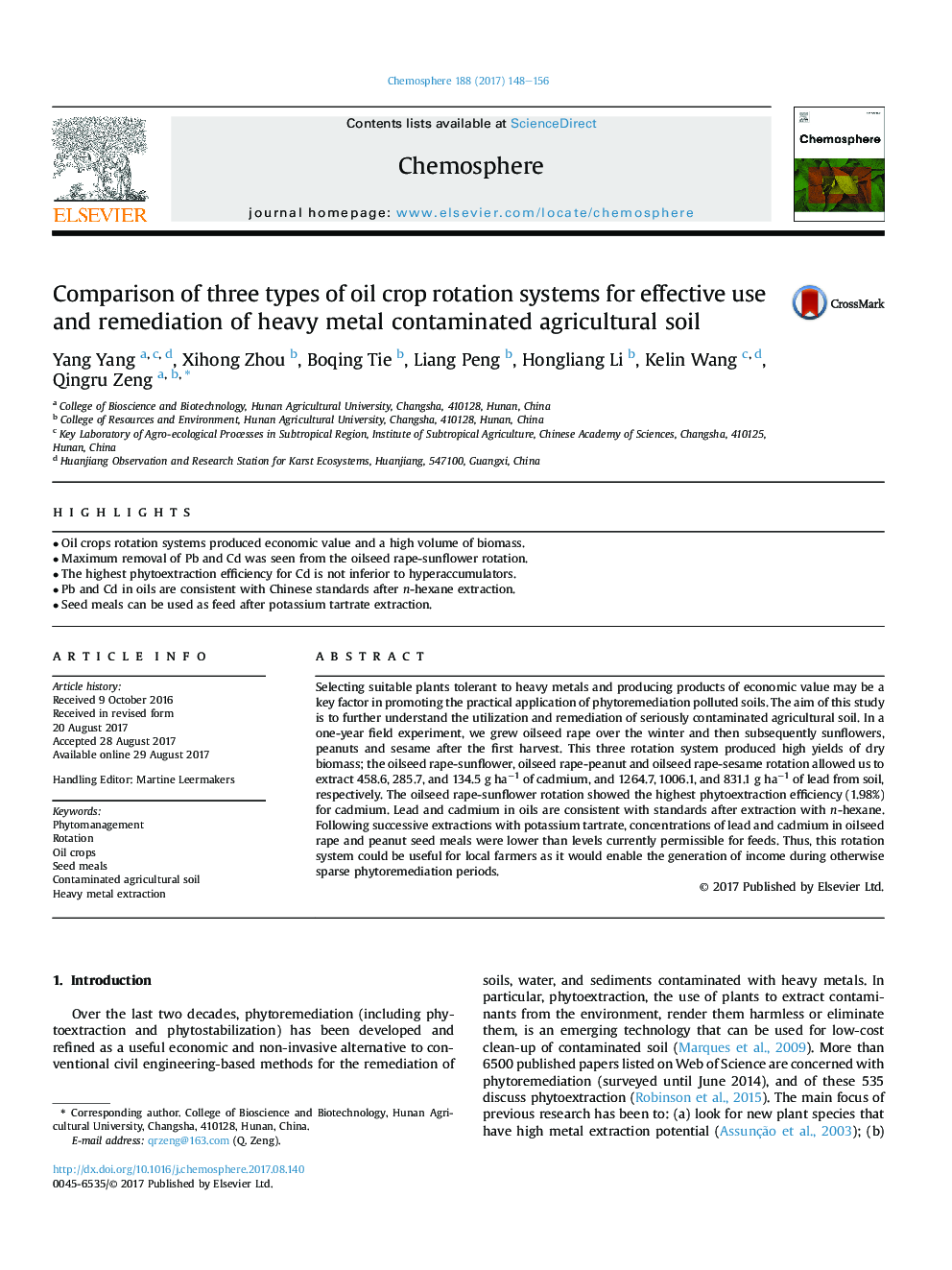| Article ID | Journal | Published Year | Pages | File Type |
|---|---|---|---|---|
| 5745821 | Chemosphere | 2017 | 9 Pages |
â¢Oil crops rotation systems produced economic value and a high volume of biomass.â¢Maximum removal of Pb and Cd was seen from the oilseed rape-sunflower rotation.â¢The highest phytoextraction efficiency for Cd is not inferior to hyperaccumulators.â¢Pb and Cd in oils are consistent with Chinese standards after n-hexane extraction.â¢Seed meals can be used as feed after potassium tartrate extraction.
Selecting suitable plants tolerant to heavy metals and producing products of economic value may be a key factor in promoting the practical application of phytoremediation polluted soils. The aim of this study is to further understand the utilization and remediation of seriously contaminated agricultural soil. In a one-year field experiment, we grew oilseed rape over the winter and then subsequently sunflowers, peanuts and sesame after the first harvest. This three rotation system produced high yields of dry biomass; the oilseed rape-sunflower, oilseed rape-peanut and oilseed rape-sesame rotation allowed us to extract 458.6, 285.7, and 134.5 g haâ1 of cadmium, and 1264.7, 1006.1, and 831.1 g haâ1 of lead from soil, respectively. The oilseed rape-sunflower rotation showed the highest phytoextraction efficiency (1.98%) for cadmium. Lead and cadmium in oils are consistent with standards after extraction with n-hexane. Following successive extractions with potassium tartrate, concentrations of lead and cadmium in oilseed rape and peanut seed meals were lower than levels currently permissible for feeds. Thus, this rotation system could be useful for local farmers as it would enable the generation of income during otherwise sparse phytoremediation periods.
